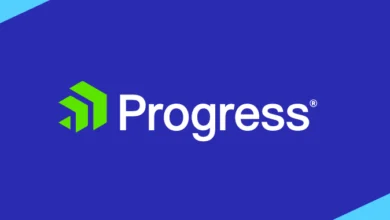OWASP Top 10 for Beginners: Understanding Common Web Application Vulnerabilities

Getting started with web development or cybersecurity? You’ve probably heard whispers of something called the “OWASP Top 10”. If it sounds intimidating, don’t worry! This guide breaks down the OWASP Top 10 for beginners, explaining what it is, why it matters, and introducing some common web application vulnerabilities you should know about.
Think of the internet as a bustling city. Web applications are the buildings – shops, offices, homes – where we interact online. Just like real buildings need security (locks, alarms), web applications need protection against threats. The OWASP Top 10 list helps us identify the most common and dangerous ways attackers might try to break in.
What Exactly is OWASP?
OWASP stands for the Open Web Application Security Project®. It’s a non-profit, global community dedicated to improving software security. They produce articles, methodologies, documentation, tools, and technologies – all freely available. Their most famous project? The OWASP Top 10.
This isn’t just some random list. The OWASP Top 10 is a consensus-driven document, updated every few years (the latest official version referenced is typically 2021), based on extensive data and research from security experts worldwide. It highlights the ten *most critical* security risks that organizations and developers need to address to protect their web applications.
[Hint: Insert image/video explaining what OWASP is – maybe their logo or a diagram of their mission]
Why Should Beginners Care About the OWASP Top 10?
Understanding the OWASP Top 10 for beginners is crucial for several reasons:
- Awareness: It introduces you to the most prevalent threats you’ll encounter or need to prevent.
- Foundation: It provides a solid base for learning secure coding practices.
- Industry Standard: Many organizations use it as a benchmark for their security efforts. Knowing it makes you more valuable.
- Prevention Mindset: It helps you think defensively from the start, whether you’re building, testing, or managing web applications.
A Peek Inside the OWASP Top 10 (Simplified for Beginners)
The OWASP Top 10 list ranks vulnerabilities based on factors like exploitability, detectability, and impact. While the list evolves, let’s look at a few persistent examples, often found in the 2021 list, simplified for understanding:
1. Broken Access Control (A01:2021)
What it is: This happens when restrictions on what users are allowed to do aren’t properly enforced. Imagine being able to walk into any office in a building, even the CEO’s, just because the doors aren’t locked properly.
Simple Example: You change the ID number in a website URL (like `/user/123/profile` to `/user/456/profile`) and suddenly you can see *another* user’s private information because the system didn’t check if you *should* have access.
Why it’s bad: Attackers can view sensitive data, modify other users’ information, or change access rights.
2. Injection (A03:2021)
What it is: This occurs when an attacker can send malicious data to an application, tricking it into executing unintended commands. Think of slipping a fake command into a request that the system then runs.
Simple Example: A website search box isn’t properly secured. An attacker types in special database commands instead of a search term. If vulnerable, the website might accidentally run those commands, potentially revealing or deleting database information.
Why it’s bad: Can lead to data theft, data loss, denial of service, or complete system takeover.
3. Security Misconfiguration (A05:2021)
What it is: This is like leaving the back door of your house unlocked or using the default “admin/admin” password for your Wi-Fi router. It involves insecure default settings, incomplete configurations, open cloud storage, misconfigured security headers, or revealing verbose error messages containing sensitive information.
Simple Example: A web server has a directory listing feature enabled by default, allowing anyone to browse server files. Or, an application framework has default accounts and passwords that haven’t been changed.
Why it’s bad: Makes it easy for attackers to gain unauthorized access or find other weaknesses.
Other Notable Mentions (from OWASP Top 10 2021):
- Cryptographic Failures (A02): Issues related to protecting data, like using weak encryption or not encrypting sensitive data at all.
- Insecure Design (A04): Flaws in the fundamental design and architecture of the application that create risks.
- Vulnerable and Outdated Components (A06): Using software libraries or frameworks with known security holes.
- Identification and Authentication Failures (A07): Weak password policies or flawed session management.
[Hint: Insert image/video illustrating one of the vulnerabilities, e.g., a simplified diagram of an Injection attack]
Moving Forward: What Next?
As a beginner, you don’t need to become an expert overnight. The first step is awareness. Familiarize yourself with the concepts in the OWASP Top 10 for beginners.
Here are some next steps:
- Read More: Visit the official OWASP Top 10 Project page for the full details.
- Learn Secure Coding Basics: Start learning how to write code that avoids these common pitfalls. Many resources focus on secure development practices. Check out our related article on Introduction to Secure Coding Practices.
- Stay Updated: The threat landscape changes. Keep an eye on OWASP updates and security news.
Understanding the OWASP Top 10 is a fundamental step in appreciating web application security. By learning about these common risks, even at a basic level, you’re better equipped to build, use, and interact with web applications more safely.




